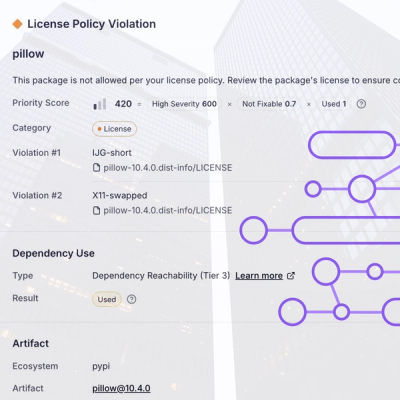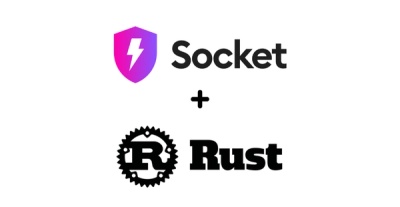
Research
/Security News
Critical Vulnerability in NestJS Devtools: Localhost RCE via Sandbox Escape
A flawed sandbox in @nestjs/devtools-integration lets attackers run code on your machine via CSRF, leading to full Remote Code Execution (RCE).
github.com/PuerkitoBio/Goquery
goquery brings a syntax and a set of features similar to jQuery to the Go language. It is based on Go's net/html package and the CSS Selector library cascadia. Since the net/html parser returns nodes, and not a full-featured DOM tree, jQuery's stateful manipulation functions (like height(), css(), detach()) have been left off.
Also, because the net/html parser requires UTF-8 encoding, so does goquery: it is the caller's responsibility to ensure that the source document provides UTF-8 encoded HTML. See the wiki for various options to do this.
Syntax-wise, it is as close as possible to jQuery, with the same function names when possible, and that warm and fuzzy chainable interface. jQuery being the ultra-popular library that it is, I felt that writing a similar HTML-manipulating library was better to follow its API than to start anew (in the same spirit as Go's fmt package), even though some of its methods are less than intuitive (looking at you, index()...).
Required Go version:
v1.10.0 of goquery, Go 1.23+ is required due to the use of function-based iterators.v1.9.0 of goquery, Go 1.18+ is required due to the use of generics.net/html dependency.Ongoing goquery development is tested on the latest 2 versions of Go.
$ go get github.com/PuerkitoBio/goquery
(optional) To run unit tests:
$ cd $GOPATH/src/github.com/PuerkitoBio/goquery
$ go test
(optional) To run benchmarks (warning: it runs for a few minutes):
$ cd $GOPATH/src/github.com/PuerkitoBio/goquery
$ go test -bench=".*"
Note that goquery's API is now stable, and will not break.
go.mod dependencies, small optimization (thanks @myxzlpltk).go.mod dependencies, add go1.24 to the test matrix.go.mod dependencies.EachIter which provides an iterator that can be used in for..range loops on the *Selection object. goquery now requires Go version 1.23+ (thanks @amikai).go.mod dependencies.go.mod dependencies.Map function and Selection.Map method, better document the cascadia differences (thanks @jwilsson).Map function, goquery now requires Go version 1.18+ (thanks @Fesaa).go.mod dependencies, update CI workflow.Render function to render a Selection to an io.Writer (thanks @anthonygedeon).Single and SingleMatcher functions to optimize first-match selection (thanks @gdollardollar).{Prepend,Append,Set}Html on a Selection that contains non-Element nodes.AfterHtml, AppendHtml, etc.). Thanks to @thiemok and @davidjwilkins for their work on this.NewDocumentFromReader examples.NewDocument(url) and NewDocumentFromResponse(response).ToEnd constant to Slice until the end of the selection (thanks to @davidjwilkins for raising the issue).AddBack* and deprecate AndSelf (thanks to @davidjwilkins).SetHtml and SetText (thanks to @glebtv).Selection.Text (thanks to @radovskyb).Matcher implementation that never matches any node (instead of a panic). So for example, doc.Find("~") returns an empty *Selection object.NodeName utility function similar to the DOM's nodeName property. It returns the tag name of the first element in a selection, and other relevant values of non-element nodes (see doc for details). Add OuterHtml utility function similar to the DOM's outerHTML property (named OuterHtml in small caps for consistency with the existing Html method on the Selection).AttrOr helper method to return the attribute's value or a default value if absent. Thanks to piotrkowalczuk.*Matcher functions, that receive compiled cascadia selectors instead of selector strings, thus avoiding potential panics thrown by goquery via cascadia.MustCompile calls. This results in better performance (selectors can be compiled once and reused) and more idiomatic error handling (you can handle cascadia's compilation errors, instead of recovering from panics, which had been bugging me for a long time). Note that the actual type expected is a Matcher interface, that cascadia.Selector implements. Other matcher implementations could be used.html.Nodes.NewDocumentFromReader() (thanks jweir) which allows creating a goquery document from an io.Reader.NewDocumentFromResponse() (thanks assassingj) which allows creating a goquery document from an http response.EachWithBreak() which allows to break out of an Each() loop by returning false. This function was added instead of changing the existing Each() to avoid breaking compatibility.Document.Root is removed, Document is now a Selection itself (a selection of one, the root element, just like Document.Root was before). Add jQuery's Closest() method.goquery exposes two structs, Document and Selection, and the Matcher interface. Unlike jQuery, which is loaded as part of a DOM document, and thus acts on its containing document, goquery doesn't know which HTML document to act upon. So it needs to be told, and that's what the Document type is for. It holds the root document node as the initial Selection value to manipulate.
jQuery often has many variants for the same function (no argument, a selector string argument, a jQuery object argument, a DOM element argument, ...). Instead of exposing the same features in goquery as a single method with variadic empty interface arguments, statically-typed signatures are used following this naming convention:
Prev()), and the version with a selector string argument is called XxxFiltered() (e.g.: PrevFiltered())Is())XxxSelection() and take a *Selection object as argument (e.g.: FilterSelection())XxxNodes() and take a variadic argument of type *html.Node (e.g.: FilterNodes())XxxFunction() and take a function as argument (e.g.: FilterFunction())Matcher interface and are defined as XxxMatcher() (e.g.: IsMatcher())Utility functions that are not in jQuery but are useful in Go are implemented as functions (that take a *Selection as parameter), to avoid a potential naming clash on the *Selection's methods (reserved for jQuery-equivalent behaviour).
The complete package reference documentation can be found here.
Please note that Cascadia's selectors do not necessarily match all supported selectors of jQuery (Sizzle). See the cascadia project for details. Also, the selectors work more like the DOM's querySelectorAll, than jQuery's matchers - they have no concept of contextual matching (for some concrete examples of what that means, see this ticket). In practice, it doesn't matter very often but it's something worth mentioning. Invalid selector strings compile to a Matcher that fails to match any node. Behaviour of the various functions that take a selector string as argument follows from that fact, e.g. (where ~ is an invalid selector string):
Find("~") returns an empty selection because the selector string doesn't match anything.Add("~") returns a new selection that holds the same nodes as the original selection, because it didn't add any node (selector string didn't match anything).ParentsFiltered("~") returns an empty selection because the selector string doesn't match anything.ParentsUntil("~") returns all parents of the selection because the selector string didn't match any element to stop before the top element.See some tips and tricks in the wiki.
Adapted from example_test.go:
package main
import (
"fmt"
"log"
"net/http"
"github.com/PuerkitoBio/goquery"
)
func ExampleScrape() {
// Request the HTML page.
res, err := http.Get("http://metalsucks.net")
if err != nil {
log.Fatal(err)
}
defer res.Body.Close()
if res.StatusCode != 200 {
log.Fatalf("status code error: %d %s", res.StatusCode, res.Status)
}
// Load the HTML document
doc, err := goquery.NewDocumentFromReader(res.Body)
if err != nil {
log.Fatal(err)
}
// Find the review items
doc.Find(".left-content article .post-title").Each(func(i int, s *goquery.Selection) {
// For each item found, get the title
title := s.Find("a").Text()
fmt.Printf("Review %d: %s\n", i, title)
})
}
func main() {
ExampleScrape()
}
There are a number of ways you can support the project:
The BSD 3-Clause license, the same as the Go language. Cascadia's license is here.
FAQs
Unknown package
Did you know?

Socket for GitHub automatically highlights issues in each pull request and monitors the health of all your open source dependencies. Discover the contents of your packages and block harmful activity before you install or update your dependencies.

Research
/Security News
A flawed sandbox in @nestjs/devtools-integration lets attackers run code on your machine via CSRF, leading to full Remote Code Execution (RCE).

Product
Customize license detection with Socket’s new license overlays: gain control, reduce noise, and handle edge cases with precision.

Product
Socket now supports Rust and Cargo, offering package search for all users and experimental SBOM generation for enterprise projects.